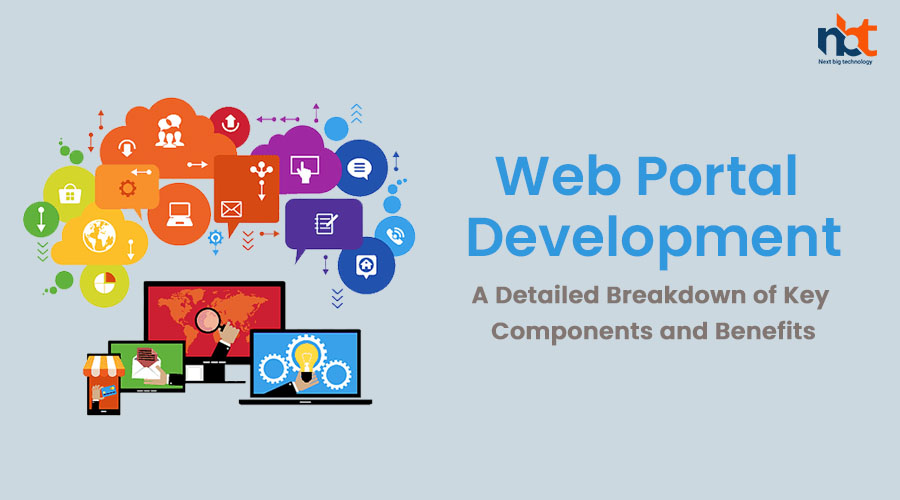Introduction: Web portals serve as gateways to information, services, and collaboration platforms, providing users with centralized access to various resources. Whether you’re building a customer portal, employee portal, or industry-specific portal, web portal development requires careful planning and execution. In this blog, we will provide a detailed breakdown of the key components and benefits of web portal development, empowering you to create efficient and user-friendly online portals.
- User Interface (UI) Design: User interface design focuses on creating an intuitive and visually appealing interface for portal users. Key aspects of UI design include:
a) Visual Layout: Creating a clean and organized layout that guides users’ attention and enhances usability.
b) Navigation Structure: Designing an intuitive navigation system that allows users to easily access different sections and features of the portal.
c) Responsive Design: Ensuring the portal is responsive and accessible across various devices, including desktops, tablets, and mobile devices.
- User Authentication and Security: User authentication and security are crucial for protecting sensitive data and ensuring authorized access. Key aspects of authentication and security include:
a) User Registration and Login: Implementing a secure registration and login system to authenticate users and control access to portal features.
b) Role-based Access Control: Defining user roles and permissions to manage access rights based on user types and responsibilities.
c) Data Encryption: Implementing encryption protocols to protect user data and sensitive information transmitted through the portal.
- Content Management System (CMS): A robust content management system is essential for managing and organizing portal content. Key aspects of CMS include:
a) Content Creation and Editing: Providing a user-friendly interface for administrators to create, edit, and publish content within the portal.
b) Workflow Management: Implementing workflows to streamline content approval processes and enable collaboration among content creators.
c) Version Control: Maintaining a version control system to track content changes and allow administrators to roll back to previous versions if needed.
- Integration of Third-Party Services: Integrating third-party services enhances the functionality and capabilities of the web portal. Key aspects of integration include:
a) Payment Gateways: Enabling secure online transactions by integrating payment gateways to facilitate online payments and transactions.
b) CRM Integration: Integrating customer relationship management (CRM) systems to centralize customer data and streamline customer interactions.
c) Social Media Integration: Incorporating social media integration to enable users to share content, engage with social media platforms, and enhance user engagement.
- Analytics and Reporting: Analytics and reporting tools provide valuable insights into portal performance and user behavior. Key aspects of analytics and reporting include:
a) User Analytics: Tracking user behavior, demographics, and engagement patterns to identify areas for improvement and optimize the user experience.
b) Performance Monitoring: Monitoring portal performance, including page load times, server response times, and error rates, to ensure a smooth user experience.
c) Customized Reporting: Generating customized reports and dashboards to analyze portal usage, user trends, and business metrics.
Conclusion: Web portal development is a complex process that requires careful consideration of various components to ensure a seamless user experience, robust security, and efficient content management. By understanding the key components discussed in this blog, including UI design, user authentication and security, CMS, integration of third-party services, and analytics and reporting, you can build powerful and effective web portals that cater to the specific needs of your users and drive business success. Collaborating with experienced web development professionals will further ensure the successful implementation of your web portal project.

















